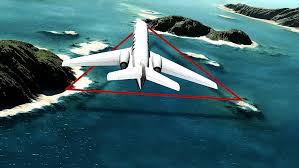Exploring Mid-Ocean Ridges: Key Examples and Their Geological Significance

Mid-ocean ridges are among the most remarkable and dynamic geological features on Earth. Hidden beneath the vast expanses of the world’s oceans, these underwater mountain ranges are the sites of continuous crust formation and crucial players in the movement of tectonic plates. They are fundamental to understanding how our planet’s surface evolves over millions of years.
In this blog, we will dive deep into what mid-ocean ridges are, how they form, and explore some of the most important examples worldwide. We’ll also look at their broader significance for Earth’s geology, ecosystems, and natural resources.
What Are Mid-Ocean Ridges?
Mid-ocean ridges are underwater mountain ranges formed at divergent plate boundaries, where two tectonic plates are moving away from each other. This movement allows magma from the Earth’s mantle to rise up through the gap, cool, and solidify, creating new oceanic crust.
This process is known as seafloor spreading, a key component of the theory of plate tectonics. As new crust forms at the ridge, older crust is pushed outward on both sides, gradually expanding the ocean basin.
Mid-ocean ridges are typically characterized by:
-
Long, continuous mountain chains running thousands of kilometers.
-
Volcanic activity due to magma upwelling.
-
Hydrothermal vents that support unique ecosystems.
-
Earthquake activity associated with plate movements.
How Do Mid-Ocean Ridges Form?
The formation of mid-ocean ridges starts deep inside the Earth:
-
Mantle Convection: Heat from the Earth’s interior causes mantle rocks to slowly circulate in convection currents.
-
Plate Divergence: These currents pull tectonic plates apart at divergent boundaries.
-
Magma Upwelling: The reduction in pressure causes mantle rock to partially melt, creating magma.
-
Crust Formation: Magma rises through fractures, erupts as lava, and solidifies to form new oceanic crust.
-
Seafloor Spreading: As magma keeps pushing upward, older crust is pushed sideways, making room for new crust.
This continuous process can create enormous underwater mountain ranges that stretch across ocean basins.
Key Examples of Mid-Ocean Ridges
1. Mid-Atlantic Ridge
The Mid-Atlantic Ridge is arguably the most famous mid-ocean ridge on the planet and serves as a textbook example of seafloor spreading.
-
Length & Location: It runs approximately 16,000 kilometers from the Arctic Ocean in the north to the Southern Ocean near Antarctica.
-
Tectonic Plates: It separates the Eurasian Plate from the North American Plate in the northern Atlantic and the African Plate from the South American Plate in the south.
-
Geological Significance: The Mid-Atlantic Ridge was crucial evidence for the acceptance of the plate tectonics theory. It proved that ocean floors were not static but constantly renewing.
-
Unique Feature: Iceland is the only place on Earth where the ridge is visible above sea level. This allows scientists to study mid-ocean ridge geology on land, including volcanic activity and rift valleys.
-
Volcanic and Earthquake Activity: The ridge is characterized by frequent volcanic eruptions and earthquakes due to ongoing tectonic activity.
2. East Pacific Rise
The East Pacific Rise is a fast-spreading mid-ocean ridge located in the eastern Pacific Ocean.
-
Location: Extending from the Gulf of California southward towards the Antarctic Plate boundary.
-
Spreading Rate: It spreads faster than the Mid-Atlantic Ridge—up to 15 cm per year compared to about 2.5 cm per year for the Mid-Atlantic Ridge.
-
Topography: Because of its rapid spreading, the ridge tends to have a smoother and less rugged appearance.
-
Volcanism and Hydrothermal Vents: The East Pacific Rise hosts intense volcanic activity and is famous for hydrothermal vents, which support diverse biological communities.
-
Tectonic Context: The ridge marks the boundary between the Pacific Plate and several smaller plates including the Nazca and Cocos plates.
3. Indian Ocean Ridge System
The Indian Ocean features multiple mid-ocean ridges, notably the Central Indian Ridge, the Carlsberg Ridge, and the Southwest Indian Ridge.
-
Location: These ridges run from near the African coast across the Indian Ocean basin.
-
Tectonic Importance: They separate the African Plate, the Indo-Australian Plate, and the Antarctic Plate.
-
Seismic Activity: The ridges are associated with earthquakes and volcanic activity, though less intense than the East Pacific Rise.
-
Unique Geology: The Indian Ocean ridges interact with complex plate boundaries and triple junctions, making them important for studying plate tectonic interactions.
Why Mid-Ocean Ridges Matter
Geological and Geophysical Significance
Mid-ocean ridges are fundamental in understanding Earth’s geology. They provide clear evidence for:
-
Plate Tectonics: The existence of mid-ocean ridges confirms that Earth’s lithosphere is divided into plates that move relative to each other.
-
Seafloor Spreading: These ridges are where the ocean crust is created, confirming the dynamic nature of the Earth’s surface.
-
Volcanism and Earthquakes: They are zones of intense geological activity, helping scientists study these phenomena in a unique underwater setting.
Biological Importance
Hydrothermal vents along mid-ocean ridges release mineral-rich hot water, supporting extraordinary ecosystems. These ecosystems thrive without sunlight, relying instead on chemosynthesis—bacteria that convert chemicals into energy.
-
Unique Species: Giant tube worms, clams, and shrimp have adapted to these extreme environments.
-
Scientific Insight: Studying these life forms helps researchers understand the limits of life on Earth and the potential for life on other planets.
Economic and Resource Value
Mid-ocean ridges are rich in mineral deposits formed by hydrothermal processes:
-
Metals and Minerals: They contain valuable deposits of copper, gold, zinc, and rare earth elements.
-
Future Resource Potential: As land-based resources become scarce, mining mid-ocean ridge deposits may become economically viable, though it raises environmental concerns.
Conclusion
Mid-ocean ridges are among the most fascinating and important features of the Earth’s underwater landscape. They reveal the ongoing processes of plate tectonics and seafloor spreading that continuously reshape our planet’s surface. From the iconic Mid-Atlantic Ridge slicing through the Atlantic Ocean to the fast-spreading East Pacific Rise and the complex Indian Ocean ridge system, these underwater mountain chains tell the story of Earth’s dynamic crust.
Beyond their geological importance, mid-ocean ridges foster unique ecosystems and hold the potential for future mineral resources. Understanding them not only advances science but also challenges us to think about the stewardship of our ocean environments.
If you’re curious about Earth’s hidden mountains and the powerful forces shaping our planet, mid-ocean ridges are an incredible place to start exploring.







Leave a Comment